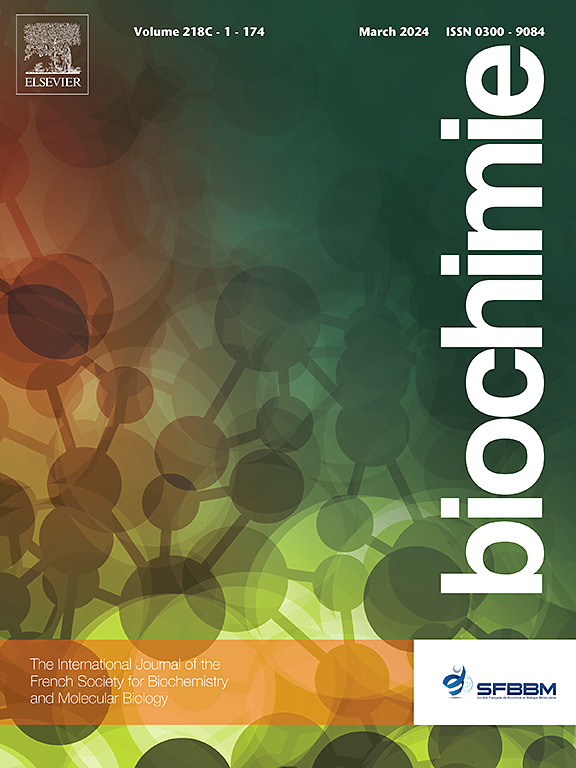Lambda exonuclease assisted helicase-dependent amplification CRISPR/Cas12a detection of Listeria monocytogenes
IF 3
3区 生物学
Q2 BIOCHEMISTRY & MOLECULAR BIOLOGY
引用次数: 0
Abstract
We describe the construction of a protospacer adjacent motif-free CRISPR/Cas12a fluorescent biosensor based on lambda exonuclease (λ-exo) and helicase-dependent amplification (HDA) to detect Listeria monocytogenes(L. monocytogenes). The hlyA gene of L. monocytogenes was amplified by HDA. After λ-exo catalyzed cleavage of 5′ phosphorylated single-stranded DNA of amplification product double-stranded DNA, the double-stranded DNA formed single-stranded DNA (ssDNA). The ssDNA as a substrate activated the trans-cleavage capability of CRISPR/Cas12a to cleave the reporter gene to produce fluorescence signals. Under optimized experimental conditions, the lower limit of L. monocytogenes detection by the fluorescent biosensor was 11.5 CFU/mL, with a linear range of detection from 101 to 107 CFU/mL. The fluorescent biosensor permits simple and sensitive detection of L. monocytogenes and provides a promising analysis platform for clinical diagnosis and biomedical research without protospacer adjacent motif sequence ssDNA.
Lambda外切酶辅助解旋酶依赖扩增CRISPR/Cas12a检测单核增生李斯特菌。
本文描述了一种基于λ外切酶(λ-exo)和解旋酶依赖扩增(HDA)的原间隔基邻近无基序CRISPR/Cas12a荧光生物传感器的构建,用于检测单核增生李斯特菌(Listeria monocytogenes)。monocytogenes)。利用HDA扩增单核增生乳杆菌的hlyA基因。λ-exo催化扩增产物双链DNA的5'磷酸化单链DNA发生裂解,形成单链DNA (ssDNA)。ssDNA作为底物激活CRISPR/Cas12a的反式切割能力,切割报告基因产生荧光信号。在优化的实验条件下,荧光生物传感器对单核增生乳杆菌的检测下限为11.5 CFU/mL,检测范围为101 ~ 107 CFU/mL。该荧光生物传感器可以简单、灵敏地检测单核增生乳杆菌,为临床诊断和生物医学研究提供了一个有前景的分析平台。
本文章由计算机程序翻译,如有差异,请以英文原文为准。
求助全文
约1分钟内获得全文
求助全文
来源期刊

Biochimie
生物-生化与分子生物学
CiteScore
7.20
自引率
2.60%
发文量
219
审稿时长
40 days
期刊介绍:
Biochimie publishes original research articles, short communications, review articles, graphical reviews, mini-reviews, and hypotheses in the broad areas of biology, including biochemistry, enzymology, molecular and cell biology, metabolic regulation, genetics, immunology, microbiology, structural biology, genomics, proteomics, and molecular mechanisms of disease. Biochimie publishes exclusively in English.
Articles are subject to peer review, and must satisfy the requirements of originality, high scientific integrity and general interest to a broad range of readers. Submissions that are judged to be of sound scientific and technical quality but do not fully satisfy the requirements for publication in Biochimie may benefit from a transfer service to a more suitable journal within the same subject area.
 求助内容:
求助内容: 应助结果提醒方式:
应助结果提醒方式:


